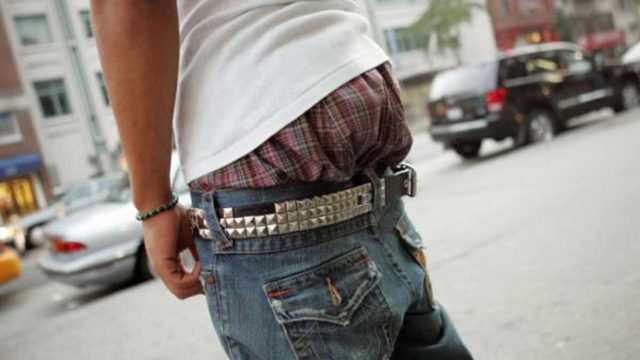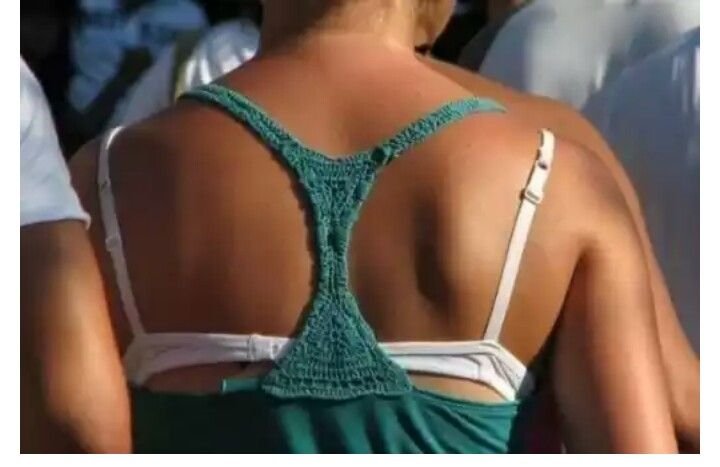Dear Beamers,
Hello, everyone. I trust I echo the sentiments of many when I say that indecent dressing in our nation represents a significant social issue. This emerging trend, contrary to our conservative values and cultural norms, is gaining acceptance within our society. In this week’s newsletter, we will explore the underlying societal influences fueling the prevalence of indecent dressing trends in Nigeria.
Indecent dressing entails the deliberate exposure of one’s body to the public eye. There is a noticeable discontent among many older Nigerians regarding indecent dressing among youths today. It is disheartening that some individuals feel entitled to dress and speak in any manner they choose under the guise of personal opinion. Such behavior deviates from the established norms and values of Nigerian society. Regrettably, this phenomenon has become increasingly pervasive, particularly in public settings and moral gatherings such as places of worship and workplaces.
In our society, there is a prevailing promotion of indecent dressing, starkly contrasting the standards of decency upheld in previous eras. We reminisce about how our mothers presented themselves, radiating elegance before our fathers, yet today’s attire paints a different picture. It’s disheartening to witness parents, who should serve as primary role models, also adopting a lax approach to dressing. Some even indulge their children’s preferences for revealing attire instead of offering guidance. In doing so, they neglect the critical role they play in shaping their children’s future. These parents inadvertently endorse indecent dressing by condoning such attire.
Seun Tilewa, a fashion model and advocate for culture and tourism, believes there is a noticeable contrast when comparing attire from past eras to contemporary fashion. In his words,
“Back in the day, young people were raised with strong morals and values, and their behavior reflected that. Nowadays, it’s heartbreaking to see the state of our country. Many parents and guardians neglect to instill proper dress etiquette in their children. Instead of embracing our traditional attire, some opt for foreign clothing like miniskirts, sleeveless dresses, and outlandish jeans, making them appear disoriented. Unfortunately, both men and women have adopted this trend, with many women dressing provocatively to attract attention and patronage.”

One of the primary contributors to indecent dressing among our youth is peer influence, particularly within tertiary institutions. Upon associating with negative peer groups, many individuals undergo a transformation in their attire. They become exposed to inappropriate dressing styles via television or social media, where celebrities flaunt indecent clothing, further exacerbates this issue.
During public appearances, these celebrities often don garments such as pants, miniskirts, short shorts, tight trousers, and engage in sagging, where trousers are worn low on the waist. Consequently, youth strive to emulate these figures, disregarding the importance of dressing with dignity and self-respect. In their pursuit of fashion, they compromise their integrity, opting to mimic the attire of celebrities rather than adhering to societal standards of decorum.
The prevalence of indecent attire has become a widespread issue among students across various higher education campuses in Nigeria. Virtually every institution in the country grapples with this concerning trend, and it extends beyond campus boundaries to affect numerous cities nationwide. Indecent dressing is not only offensive and improper but also morally unacceptable. Such attire choices signify a moral decay within contemporary society, reflecting a troubling trend of declining ethical standards.
As stated by Ifeanyi Ezenwa, a student enrolled at a Nigerian College of Education,
“Girls nowadays wear skirts that barely cover more than shorts, making simple tasks like sitting or climbing difficult. These outfits are not just tight and revealing but often transparent, exposing parts of the body that should be covered. Meanwhile, boys opt for a messy look with unkempt hair and jeans full of holes, dragging along the ground. Their trousers are worn low, revealing underwear, and they walk as if clutching an invisible groin.”
Peer pressure compels youths to seek inclusion within specific social circles, often without considering the consequences of their actions. This susceptibility to influence can result in many adverse outcomes. Individuals may find themselves drawn into prostitution as a result of their attire, influenced by their peers. Additionally, they may succumb to pressure to join various cult groups. Moreover, a woman who dresses indecently risks being unfairly labeled as promiscuous, tarnishing her reputation. This perception, though unfounded, negatively impacts her image. Adopting an interest for indecent dressing diminishes a woman’s worth by exposing what should be considered her most valuable assets.
However, when elders endeavor to guide youths towards embracing modesty, they are often met with rebuttals asserting the freedom to dress as they please in a supposedly liberated society. Some youths assert their autonomy by stating that since they purchase their own attire, they alone have the right to dictate their wardrobe choices. They justify their clothing preferences by emphasizing comfort and adherence to current fashion trends.
Additionally, some young women defend revealing clothing choices by citing the approval of their partners. Criticism from elders is met with accusations of being judgmental, countered by the argument that only the divine can assess one’s character, not outward appearance. This dichotomy illustrates divergent perspectives: while some advocate for the eradication of indecent dressing, others remain entrenched in its acceptance.

Indecent dressing remains a significant catalyst for the diverse forms of assaults and instances of sexual harassment within society. Under the guise of fashion, women often wear revealing attire, leaving them vulnerable to unwanted advances. Regrettably, many instances of rape involve victims who were targeted due to their provocative attire. The visual stimuli presented by scantily clad individuals can trigger impulsive and aggressive behavior in some men, leading them to commit reprehensible acts. While it is crucial to acknowledge that the responsibility for such reprehensible behavior lies solely with the perpetrators, adopting a more conservative approach to dressing can serve as a protective measure for women, mitigating the risk of experiencing such traumatic encounters.
Indecent dressing can adversely impact academic performance, as students who dress provocatively may prioritize attracting wealthy suitors to fulfill their financial needs. Consequently, they may become ensnared in a lifestyle centered around materialism and indulgence, forsaking their academic pursuits. In their quest for social validation, they may find themselves drawn into immoral social circles, compromising their values and engaging in reprehensible activities. This diversion of time and attention from academic endeavors to social activities detracts from their ability to excel in their studies. Moreover, in some academic environments, unscrupulous lecturers may exploit students who dress immodestly, subjecting them to unwanted sexual advances. Such predatory behavior not only undermines the student’s sense of safety but also serves as a significant distraction from their educational goals.
While there isn’t a universally accepted standard for attire, clothing serves distinct purposes that vary based on cultural, regional, and personal factors. Garments play a significant role in expressing cultural and ethnic identities, serving as a tangible representation of people’s heritage. Our attire serve ornamental and aesthetic functions, offering protection against adverse weather conditions and preserving modesty by covering intimate body parts. These purposes are integral to shaping an individual’s identity and personality. However, Nigerian youths often deviate from these traditional and functional dress codes, opting instead for attire that is frequently deemed immoral or inappropriate. The proliferation of Westernized dress patterns among the younger generation has sparked considerable concern and apprehension among the populace.
This lamentable societal phenomenon has permeated various age groups, affecting both the young and the elderly. While it would be unjust to attribute blame solely to parents, some culpability does rest with them. To mitigate the prevalence of indecent dressing within our society, parents must lead by example, upholding standards of decency in their own attire and behavior while serving as positive role models for their children. It is crucial for parents to remain vigilant in fulfilling their parental duties, actively monitoring the media content consumed by their children, including films, books, and websites, to ensure exposure to appropriate influences.
Religious institutions also have a vital role to play in promoting the practice of modest attire. Religious leaders should demonstrate proactive engagement in combating societal immorality, emphasizing the importance of moral conduct and the benefits of dressing appropriately. It is imperative for religious institutions to actively advocate for the culture of modest dressing, particularly among the youth.

“Religious and educational institutions don’t just watch immoral behavior; they speak out against it. Some private universities, with religious affiliations, have dress codes that require covering intimate body parts and prohibiting exposure of breasts, stomachs, navels, and bare chests. Despite these rules, some students still attempt to dress indecently.” Says Uluocha Mercy
Every educational institution bears significant responsibility in promoting a culture of decency in dressing, recognizing that youths often gravitate towards indecent attire due to their exuberance and sense of liberation within institutional settings. To effectively address this issue, stringent enforcement of dress codes should be implemented within colleges of education, polytechnics, and universities nationwide. This necessitates collaborative action involving the security department, faculty, and management of tertiary institutions.
One must ponder the implications for tomorrow’s society given the current standards of grooming among students. Indecent dressing is not merely an abrupt behavior but rather a cultivated pattern stemming from factors such as parental neglect or inadequate upbringing.
It is necessary to instill in the youth an understanding that indecent dressing contradicts societal principles. It is essential for young individuals to recognize that inappropriate attire does not enhance one’s beauty; rather, it tarnishes one’s image and signifies a defiance of social norms. The manner in which an individual dresses directly influences how they are perceived and addressed.
Dressing appropriately and modestly garners respect and safeguards one’s dignity, whereas indecent attire invites disrespect, harassment, and tragically, can lead to instances of sexual assault, as experienced by many who dress immodestly.
Hence, all sectors and parties involved must take a resolute and conscientious stance to reinstate our nation to its foundational values. It is important to cease turning a blind eye to even the most minor lapses in decency and instead, counsel and admonish those who derive gratification from exploiting their bodies for public spectacle, with empathy and care. This approach is crucial in reclaiming our inherent commitment to modesty and ensuring the cultivation of a morally upright society, both in behavior and appearance.




